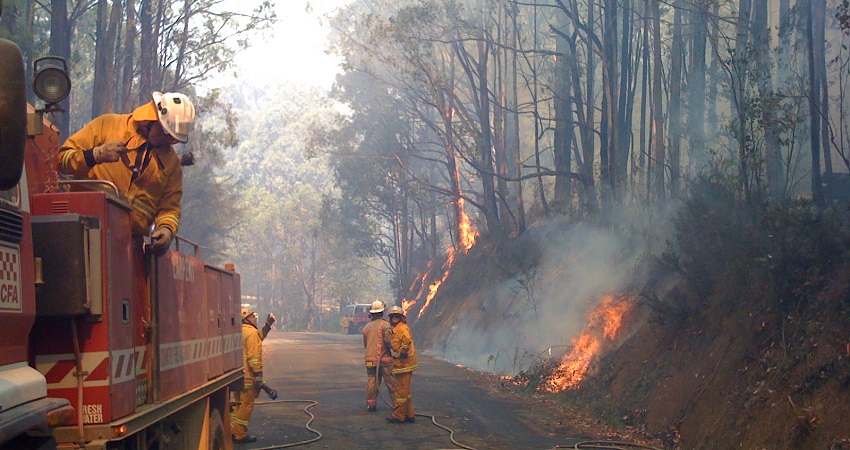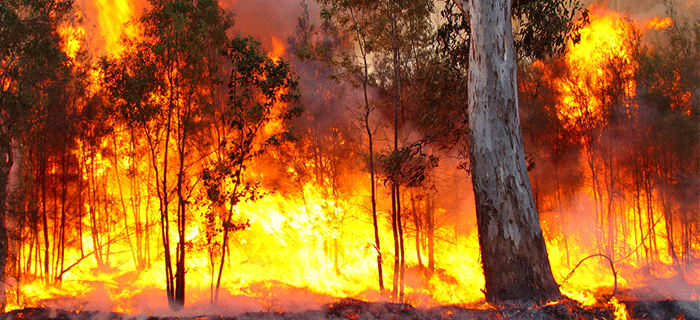Recognizing the Importance of a Thorough BAL Assessment Report
Wiki Article
The Value of Bushfire Management in Fire Security
In the realm of fire defense, the relevance of efficient bushfire administration can not be underrated. As neighborhoods around the world face enhancing instances of wildfires, the positive approach to protecting against and reducing these natural disasters through critical bushfire administration strategies has become a critical aspect. Past the immediate danger to human life and property, the interplay in between bushfire administration and environmental conservation, community participation, and environment change positions intricate difficulties that need detailed services.Relevance of Proactive Bushfire Prevention
Aggressive bushfire prevention strategies are necessary in reducing the ruining effects of wildfires on areas and environments. By taking preventative measures before a bushfire takes place, the risks related to these natural catastrophes can be dramatically minimized. One key element of aggressive bushfire prevention is fuel monitoring. This entails decreasing the quantity of combustible material, such as dead greenery and completely dry fallen leaves, that can act as fuel for fires. Gas monitoring techniques consist of suggested burns, where controlled fires are intentionally lit to lower the accumulation of combustible material.Enlightening the public on fire safety and security techniques and promoting community awareness about the importance of bushfire avoidance are vital parts of positive methods. Eventually, proactive bushfire avoidance plays a substantial function in safeguarding areas and ecological communities from the damaging impacts of wildfires.
Role of Area Involvement in Fire Security
Involving the neighborhood in fire security initiatives is important to enhancing the efficiency of aggressive bushfire avoidance strategies. Community involvement plays a critical function in fostering a collective understanding of the risks posed by bushfires and the value of preparedness measures. By including regional homeowners, authorities can disseminate essential info ablaze security practices, discharge treatments, and very early caution systems, empowering people to take proactive steps to protect their lives and properties.By fostering a society of readiness and cooperation, neighborhoods can enhance their ability to react successfully to bushfire emergencies, decreasing the impact on residential or commercial properties and lives. Eventually, neighborhood engagement is a foundation of thorough fire security approaches, stressing the value of cumulative action in safeguarding at risk areas from the danger of bushfires.
Value of Wildlife Preservation in Bushfire Management
Conservation of wild animals plays a crucial role in effective bushfire administration techniques, making certain the security of varied ecological communities and biodiversity in fire-prone regions. Wildlife conservation is important as it adds to the overall durability of ecosystems, assisting in their ability to hold up against and recoup from the impact of bushfires. By preserving habitats and securing various types, the all-natural equilibrium within these environments is kept, which is crucial for their long-term wellness and sustainability.Moreover, wild animals conservation additionally assists in reducing the threat and intensity of bushfires. Healthy and balanced environments with well-preserved wild animals populaces can work as all-natural firebreaks, reducing the spread of fires and restricting their harmful potential BAL Report (BAL Assessment). Particular animal species, like delving animals or birds that spread out seeds, play unique duties in avoiding fires or assisting in the post-fire regrowth of environments
Integrating wildlife preservation right into bushfire management techniques is not just necessary for guarding biodiversity but additionally for advertising the general health and durability of environments in the face of raising fire threats.
Advantages of Strategic Gas Reduction Programs
Strategically carrying out gas reduction programs is important in alleviating the danger and effect of bushfires in fire-prone regions. These programs involve controlled burning, mechanical clearing up, and other techniques to reduce the amount of flammable plants readily available to sustain wildfires. By tactically lowering fuel lots in essential areas, such as close to household areas or vital facilities, the intensity and spread of bushfires can be substantially reduced.One of the primary benefits of gas reduction programs is the enhancement of overall fire resilience in an ecosystem. By producing tactical fuel breaks and reducing the continuity of plants, these programs assist to interrupt the course of a bushfire, making it simpler for firefighters to consist of and snuff out the blaze. Furthermore, fuel reduction programs can safeguard biodiversity by avoiding excessively extreme fires that can devastate habitats and intimidate wild animals populaces.
Moreover, these programs can additionally secure human lives and building by decreasing the danger of devastating fires that pose a substantial threat to communities. Eventually, tactical fuel reduction programs play an important duty in aggressive bushfire administration and cultivating a safer environment for both individuals and nature.
Influence of Environment Adjustment on Bushfire Threat

Greater temperature levels result in drier plants, making it more susceptible to ignition. Lowered rainfall in certain areas lengthens dry spell problems, even more increasing the flammability of the landscape. Additionally, the altering environment has altered wind patterns and climatic problems, bring about even more unpredictable fire habits and quick fire spread.
As the climate proceeds to alter, the frequency and intensity of bushfires are anticipated to increase, demanding a aggressive and adaptive technique to bushfire administration. Techniques need to develop to represent the transforming danger landscape, including environment projections and considering lasting durability in fire administration preparation. Attending to the influence of environment modification on bushfire threat is crucial in establishing reliable approaches to safeguard lives, residential or commercial property, and the atmosphere.
Final Thought
In conclusion, proactive bushfire prevention, community involvement, wildlife preservation, tactical fuel decrease programs, and consideration of environment modification are essential parts in effective fire protection. By carrying out these strategies, we can much better handle bushfire dangers and secure both human lives and the setting. BAL Assessment. It is important that stakeholders collaborate to focus on these procedures to lessen the disastrous effect of bushfires on areas and ecosystems

As the environment continues to transform, the frequency and intensity of bushfires are anticipated to climb, requiring a adaptive and positive strategy to bushfire monitoring.In verdict, aggressive bushfire avoidance, community engagement, wildlife conservation, strategic fuel reduction programs, and factor to consider of environment adjustment are critical parts in efficient fire security.
Report this wiki page